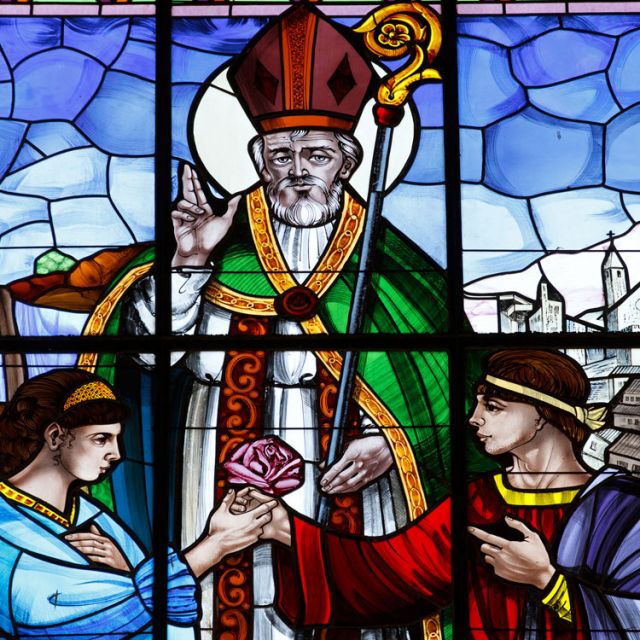"There isn't much to tell about the saint, or saints, (besides that) they are totally unrelated to Valentine's Day except for the fact that that's their feast day," said the University of St. Michael's College Christianity and Culture professor who specializes in medieval history. "The old martyrologies, the books that collect these stories, don't give us more than a couple of phrases about these people."
Here is what Silano does know about the two saints: they are connected by the name Valentine and Feb. 14.
"He was a priest, he was holy and he got killed and this is his feast day," established by Pope Gelasius I in 496.
The first account is that of a Roman priest jailed for helping Christians and blessing their marriage, both illegal at the time. While imprisoned it is said the he won the affection of the emperor, Claudius II, until attempting to convert the Roman leader for which he was condemned to death, beaten with clubs and stoned before being beheaded on Feb. 14.
The second account refers to a former bishop of Terni, located in modern-day Italy. Similar to the first account the bishop is said to have been jailed for helping Christians, blessing their marriage and evangelizing the public — again illegal acts under Roman rule.
While imprisoned he too is said to have won the affection of Claudius II until attempting to lead the emperor to Christ, at which point he faced the same fate on the same date as the other Valentine.
Silano said he is unsure whether or not these two accounts are in fact referring to the same person.
That's a possibility that finds support in The Roman Martyrology. The Church's official list of recognized saints gives only one St. Valentine for Feb. 14.
What Silano does know is that Valentine and his feast day — which was removed from the Catholic calendar of saints for universal liturgical veneration during the 1969 revision — have no connection to Valentine's Day as most North Americans know it, beyond a common date.
"The connection is purely coincidental because of the feast day," said Silano.
"When (Geoffrey) Chaucer wrote a poem in the 14th century he first made the connection of love and Feb. 14 because in his mind Valentine's Day was the beginning of spring and love, flowers in spring. Then the poem was read in the late 18th (and) early 19th century and people started the custom of sending Valentine's cards to each other."
Thus, Silano said many people have tried to make the connection between St. Valentine, love and Feb. 14. Their arguments, however, fall victim to the rhetorical fallacy of post hoc ergo propter hoc — which translates to "after this, therefore because of this" — a logical error where people assume because an event follows another, the earlier event must have caused the latter.
"It's really very, very difficult to try to tie (Valentine's Day) to the personal stories of these two people because we don't know much about the personal stories," said Silano. "Even if we did there really is no connection between the establishment of the feast as we know it, which is a 19th-century thing really, and the lives of these people."

